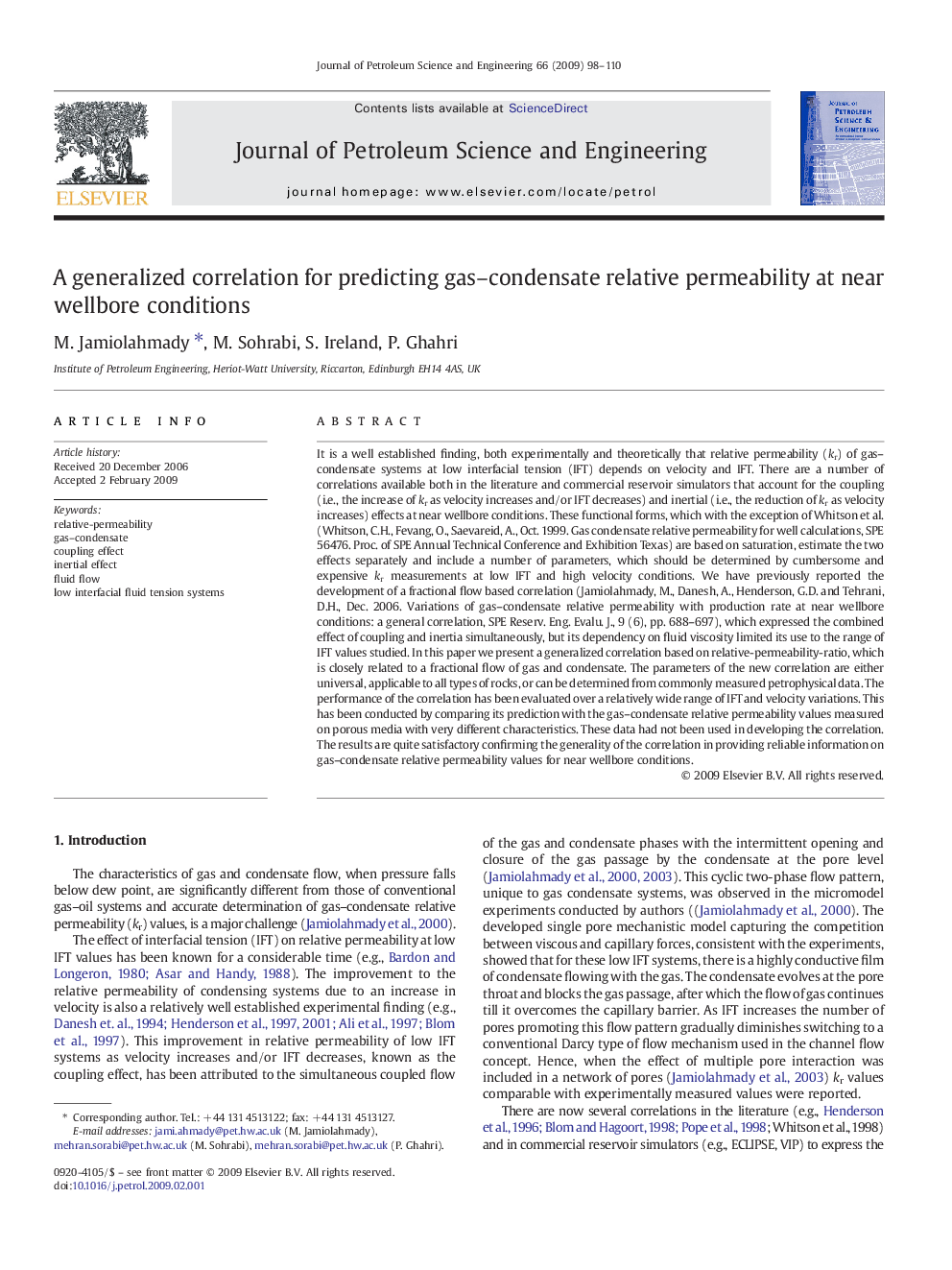| Article ID | Journal | Published Year | Pages | File Type |
|---|---|---|---|---|
| 1756152 | Journal of Petroleum Science and Engineering | 2009 | 13 Pages |
It is a well established finding, both experimentally and theoretically that relative permeability (kr) of gas–condensate systems at low interfacial tension (IFT) depends on velocity and IFT. There are a number of correlations available both in the literature and commercial reservoir simulators that account for the coupling (i.e., the increase of kr as velocity increases and/or IFT decreases) and inertial (i.e., the reduction of kr as velocity increases) effects at near wellbore conditions. These functional forms, which with the exception of Whitson et al. (Whitson, C.H., Fevang, O., Saevareid, A., Oct. 1999. Gas condensate relative permeability for well calculations, SPE 56476. Proc. of SPE Annual Technical Conference and Exhibition Texas) are based on saturation, estimate the two effects separately and include a number of parameters, which should be determined by cumbersome and expensive kr measurements at low IFT and high velocity conditions. We have previously reported the development of a fractional flow based correlation (Jamiolahmady, M., Danesh, A., Henderson, G.D. and Tehrani, D.H., Dec. 2006. Variations of gas–condensate relative permeability with production rate at near wellbore conditions: a general correlation, SPE Reserv. Eng. Evalu. J., 9 (6), pp. 688–697), which expressed the combined effect of coupling and inertia simultaneously, but its dependency on fluid viscosity limited its use to the range of IFT values studied. In this paper we present a generalized correlation based on relative-permeability-ratio, which is closely related to a fractional flow of gas and condensate. The parameters of the new correlation are either universal, applicable to all types of rocks, or can be determined from commonly measured petrophysical data. The performance of the correlation has been evaluated over a relatively wide range of IFT and velocity variations. This has been conducted by comparing its prediction with the gas–condensate relative permeability values measured on porous media with very different characteristics. These data had not been used in developing the correlation. The results are quite satisfactory confirming the generality of the correlation in providing reliable information on gas–condensate relative permeability values for near wellbore conditions.
